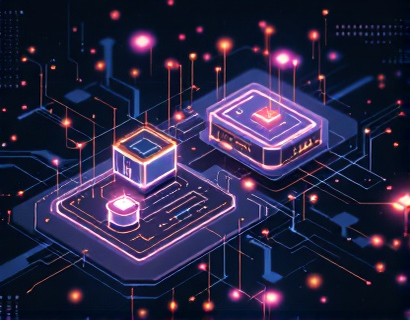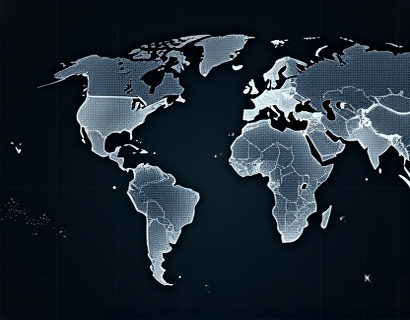Maximizing Digital Connectivity: Advanced Telecom and Internet Solutions for Enhanced Business and Personal Communication
The rapid evolution of digital technology has transformed the way businesses and individuals communicate, collaborate, and conduct daily operations. At the heart of this transformation lies advanced telecommunications infrastructure and specialized software solutions, which are pivotal in enhancing connectivity and communication. This article delves into the transformative impact of these technologies, emphasizing the importance of quality and customer satisfaction to ensure reliable and efficient access to essential digital services.
Advanced telecommunications infrastructure forms the backbone of modern digital connectivity. It encompasses a wide range of technologies and systems designed to facilitate the transmission of data, voice, and video over various networks. Key components include fiber optic cables, wireless networks, satellite communications, and undersea cables. These technologies have significantly improved the speed, reliability, and capacity of data transmission, enabling seamless communication across the globe.
Fiber optic cables, for instance, have revolutionized data transmission by offering higher bandwidth and lower latency compared to traditional copper wires. This has been particularly beneficial for businesses requiring high-speed internet for applications such as video conferencing, cloud computing, and big data analytics. The deployment of fiber-to-the-home (FTTH) and fiber-to-the-building (FTTB) solutions has made it possible for households and businesses to enjoy ultra-fast internet speeds, enhancing the overall digital experience.
Wireless networks, including 4G, 5G, and upcoming 6G technologies, have also played a crucial role in expanding connectivity. 5G, in particular, promises unprecedented speeds, low latency, and the ability to connect a massive number of devices simultaneously. This makes it ideal for IoT (Internet of Things) applications, smart cities, and advanced manufacturing. For businesses, 5G enables real-time data processing and analysis, leading to more efficient operations and innovative services. For individuals, it means faster downloads, smoother streaming, and more responsive online experiences.
Satellite communications continue to bridge the connectivity gap in remote and underserved areas. With the advent of low Earth orbit (LEO) satellite constellations, global internet coverage is becoming a reality. These satellites provide high-speed internet access to regions where traditional infrastructure is lacking, ensuring that everyone can benefit from the digital revolution. This is particularly important for businesses operating in rural or remote locations, as well as for individuals who require reliable internet connectivity for work or education.
Complementing advanced telecommunications infrastructure are specialized software solutions that enhance the efficiency and effectiveness of digital communication. These solutions range from network management tools to advanced applications designed to streamline business processes and improve customer interactions. Network management software, for example, helps organizations monitor and optimize their network performance, ensuring minimal downtime and maximum productivity.
Cloud-based collaboration tools have become indispensable for modern businesses. Platforms like Microsoft Teams, Slack, and Zoom facilitate real-time communication and collaboration among team members, regardless of their physical location. These tools support video conferencing, instant messaging, file sharing, and project management, making remote work more productive and engaging. For individuals, these platforms have democratized access to collaborative tools, enabling remote teams and freelancers to work together seamlessly.
Cybersecurity software is another critical component of advanced digital connectivity. As the reliance on digital services grows, so does the risk of cyber threats. Robust cybersecurity solutions protect sensitive data and ensure the integrity of communication channels. Features such as encryption, firewalls, intrusion detection systems, and regular security audits are essential in safeguarding against potential breaches. For businesses, implementing strong cybersecurity measures not only protects their assets but also builds trust with customers and partners.
The integration of artificial intelligence (AI) and machine learning (ML) into telecommunications and software solutions is transforming the landscape further. AI-driven network optimization can predict and prevent network issues before they impact users. ML algorithms analyze vast amounts of data to identify patterns and trends, enabling proactive maintenance and enhanced user experiences. For instance, AI-powered chatbots and virtual assistants provide 24/7 customer support, resolving common issues quickly and efficiently.
For businesses, the adoption of these advanced technologies translates into significant operational benefits. Enhanced connectivity and communication lead to increased productivity, cost savings, and improved customer satisfaction. Companies can leverage real-time data analytics to make informed decisions, optimize supply chains, and personalize customer interactions. In the healthcare sector, telemedicine platforms enabled by advanced telecom infrastructure allow patients to receive medical consultations remotely, expanding access to healthcare services.
Personal communication has also been profoundly impacted by these advancements. Smartphones and mobile devices, powered by advanced networks and software, have become central to daily life. Features like high-speed internet, high-quality cameras, and sophisticated apps have transformed how people stay connected, share information, and entertain themselves. Video calling apps have made it possible to maintain face-to-face interactions despite physical distances, fostering stronger personal and professional relationships.
However, the journey towards maximizing digital connectivity is not without challenges. One of the primary concerns is the digital divide, which refers to the gap between those who have access to advanced digital technologies and those who do not. Economic, geographic, and social factors contribute to this divide, limiting the benefits of digital connectivity for certain populations. Addressing the digital divide requires concerted efforts from governments, businesses, and non-profit organizations to provide affordable and accessible internet services to underserved communities.
Another challenge is ensuring the security and privacy of digital communications. As more aspects of life move online, the risk of cyber attacks and data breaches increases. It is crucial for both telecom providers and software solution developers to prioritize security in their designs and implement best practices to protect user data. Transparency and user education are also vital in building trust and promoting responsible digital behavior.
Sustainability is another key consideration in the development of advanced telecommunications infrastructure. The environmental impact of data centers, network equipment, and energy consumption cannot be overlooked. Adopting energy-efficient technologies, renewable energy sources, and sustainable practices can help reduce the carbon footprint of digital services. This not only benefits the environment but also aligns with the growing demand for eco-friendly solutions from consumers and businesses alike.
Looking ahead, the future of digital connectivity holds exciting possibilities. The rollout of 6G networks is expected to bring even faster speeds, lower latency, and greater capacity. This will further enhance the capabilities of IoT devices, autonomous vehicles, and augmented reality (AR) and virtual reality (VR) applications. Quantum communications, which leverage the principles of quantum mechanics, promise ultra-secure communication channels, revolutionizing how data is transmitted and protected.
In conclusion, advanced telecommunications infrastructure and specialized software solutions are essential for maximizing digital connectivity and communication. By focusing on quality, reliability, and customer satisfaction, these technologies empower businesses and individuals to thrive in the digital age. Addressing challenges such as the digital divide, security, and sustainability will be crucial in ensuring that the benefits of digital connectivity are accessible to all. As we continue to innovate and adapt, the potential for enhanced communication and collaboration knows no bounds.










































